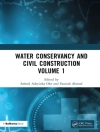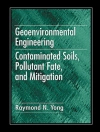Geocomputing can simulate geodynamics, crustal dynamics, earthquakes, tsunami and rock physics.
Tabela de Conteúdo
I. First steps towards modeling a multi-scale earth system, 1. Introduction, 2. Multiscale Non-Equilibrium Thermodynamics, 3. Mathematical Formulation
II. 3D Mesh Generation in Geocomputing, 1. Introduction, 2. Goemetrical Modeling, 3. Hexahedral Mesh Generation, 4. Tetrahedral Mesh Generation, 5. Conclusions
III. Strategies for Preconditioning Methods of Parellel Iterative Solver for Finite-Element Applications in Geophysics, 1. Background, 2. Various Approaches for Parallel Preconditioning Methods in III-Conditioned Probelms, 3. Examples: Contact Problems, 4. Examples: Linear Elastic Problems with Heterogeneous Material Properties, 5. Concluding Remarks, 6. Appendix 1 Parallel Iterative Solvers in Geo FEM
IV. Algorithms for Optimizing Rheology and Loading Forces in Finite Element Models for Lithospheric Deformation, 1. Introduction, 2. Methodology, 3. A Plate Flexural Model, 4. A Three-Dimensional Viscous Model of Lithospheric Deformation, 5. Discussions and Conclusions
V. Mantle Dynamics – A Case Study, 1. Introduction, 2. Physics of Mantle Convection: Basic Equations, 3. Case Study in Global Models of the Earth’s Mantle
VI. The ESy S_Particle: A New 3-D Discrete Element Model with Single Particle Rotation, 1. Introduction: A Review of the Discrete Element Method, 2. The Model, Equations and Numerical Algorithms, 3. Contct Laws, Particle Interactions and Calculation of Forces and Torques, 4. Parameter Calibration, 5. Some Recent Simulation Results, 6. Disscussion: Major Differences of the ESy S_Particle, 7. Conclusions
VII. The Terashake Computational Platform for Large-Scale Earthquake Simulations, 1. Introduction, 2. The Tera Shake Computational Platform, 3. The Terashake Application: Anelastic Wave Model, 4. Enhancement and Optimization of the Terashake Application, 5. Data Archival and Management, 6. Tera Shake Visualization, 7. Scientific Results of Tera-Shake-1 and Tera Shake 2, 8. Lessons Learned from Enabling Very-Large Scale Earthquake SImulations, 9. Summary
VIII. Probabilistic Forecast of Tsunami Hazards along Chinese Coast, 1. Introduction, 2. Geological and Geophysical Analysis, 3. Probabilistic Forecast of Tsunami Hazards, 4. Probabilistic Forecst of Tsunami and Seismic Hazard in Eastern China Sea Region, 5. Discussions and Summary, 6. Conclusion












